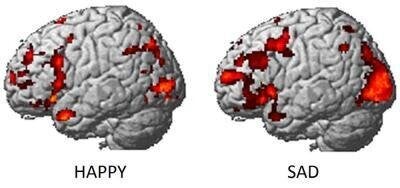Scientists are able to identify which emotion you are feeling by watching your brain.
The new technique involves the use of Functional Magnetic Resonance Imaging (fMRI), which allows researchers to view brain activity in real time.
Using an fMRI machine, scientists are able to watch the brain as it carries out different functions and tasks.
Earlier this year it was shown that scientists were able to tell which object you might be thinking about based on which areas of the brain 'light up'.
But tracking emotions remained elusive. That's partly due to the reluctance of subjects to honestly or accurately report their feelings in a study - and the fact that many emotions are not consciously felt.
But now researchers at Carnegie Mellon University have been able to break through the problem by recruiting method actors instead of normal subjects.

Where regular subjects find it difficult to reliably and repeatedly 'feel' the same emotions, method actors are experienced at cycling through different emotional states, the study - published in PLOS ONE - suggests.
"Our big breakthrough was my colleague Karim Kassam's idea of testing actors, who are experienced at cycling through emotional states. We were fortunate, in that respect, that CMU has a superb drama school," said George Loewenstein, the Herbert A. Simon University Professor of Economics and Psychology.
The study scanned 10 actors while viewing the words of nine emotions: anger, disgust, envy, fear, happiness, lust, pride, sadness and shame. The actors were then placed in the scanner and asked to enter each of those states in a random order.
Based on these results, the team was able to reliably tell which emotion an actor was feeling when later shown a serious of emotive photographs.
Critically, the same models were reliable when testing the responses of participants who had not been scanned in the first part of the trial.
"Despite manifest differences between people's psychology, different people tend to neurally encode emotions in remarkably similar ways," noted Amanda Markey, a graduate student in the Department of Social and Decision Sciences.
The next stage is to apply the new method to other problems in emotion research, including people who experience multiple emotions at the same time - or attempt to suppress what they are feeling.